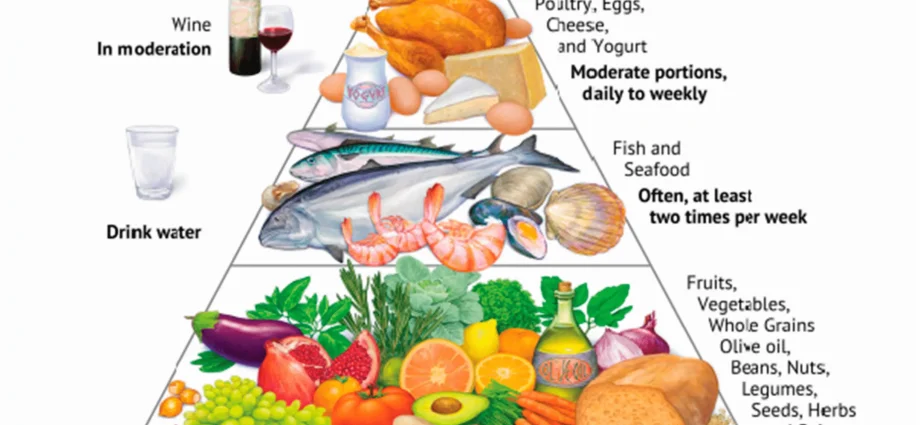Contents
Choosing the right and diverse products, the correct portions of meals and the frequency of their consumption are the basis of the correct composition of a diet. These rules apply to both the nutrition of adults and the youngest members of the family. A balanced menu, which includes meals that are safe for a toddler, influences the proper development of the young organism and its condition in the future. So what should you pay attention to when planning your baby’s diet? Get tips from Mariola Darzycka, BoboVita expert.
Choose products according to your age
When expanding the diet of the youngest, it should first of all be remembered that the introduction of new foods should not take place earlier than the 17th week of life (beginning of the 5th month) and not later than the 26th week of life (beginning of the 7th month). During this period, children usually gain the ability to sit supported, and by mastering the control of head and neck movements, they are ready to spoon-feed.
The first to be introduced into the infant’s diet is vegetables, and after about 2 weeks – fruit. A toddler at this age should receive food in the form of a smooth puree or mousse, and only after some time meals with lumps and larger pieces. During the first experiments with new flavors, small amounts of food, e.g. 3-4 teaspoons, are sufficient.
The expert reminds: expanding the diet does not mean ending breastfeeding. – Breastfeeding is the only and sufficient way to satisfy hunger in the first six months of a child’s life. During this period, the toddler does not need to be topped up and fed. It is worth remembering that breast milk is an important component of an infant’s diet long after the introduction of new flavors. According to experts’ recommendations, breastfeeding should be continued until the baby is 12 months old, for as long as the mother and baby feel the need to do so. If the mother does not breastfeed for certain reasons, she should reach for her baby for modified milk tailored to his needs, explains Mariola Darzycka.
Distinguish between symptoms of hunger and satiety
Knowledge about the frequency of feeding is essential – both to recognize the symptoms of hunger in a toddler and to prevent him from overfeeding. If a child opens its mouth or points at it with a finger when it sees food, it means that it is interested in eating it. A slower pace of eating or refusing to eat from a spoon (clenching the mouth, pouting or spitting out) is a sign that the baby is full. It is important not to force your toddler to eat if he or she shows no interest in him – eating too much worsens the child’s ability to self-regulate satiety.
Pay attention to the quality of the products
Just like the type of food and the way of introducing it into the nutrition of the youngest, the quality of the selected products also matters. The delicate organism of an infant is not indifferent to the ingredients contained in food and their nutritional value. That is why, in order to support the proper development of a toddler, it is worth reaching for products designed for him – with the age indication on the packaging (e.g. after 6 or 8 months of age). Such food must meet strict quality standards set by Polish and European Union law, and the recipes are developed by experts in the field of nutrition of infants and young children.
Don’t be afraid of gluten
According to experts, gluten can be introduced into the diet of children at the same time as other complementary foods – from the age of 4 months to the age of 12 months. At the beginning of the gradual introduction of gluten, delicate cereal products, such as porridges intended for infants and young children, will work. These are meals that are easy to prepare and do not require cooking. To prepare them, it is enough to measure the right amount of the product and combine it with warm water (in the case of milk porridge) or with mother’s milk / modified milk (in the case of non-dairy porridge) – the preparation method is always described in detail on the packaging.
What is good for a baby
On the store shelf you can find porridges composed of checked and various cereals in many flavors loved by children. These are options in dairy and non-dairy variants. They are valuable and contain a variety of grains. Thanks to this, they allow parents to expand their baby’s menu in a tasty and safe way. When selecting them, check their label to make sure they are free of added sugar, preservatives, colorings or flavor enhancers.
Important information: It is recommended to continue breastfeeding while introducing complementary foods. Breastfeeding should continue for as long as desired by mother and baby. Breastfeeding is best for your baby.
See also:
- Little child’s diet – what to eat and what to avoid?
- Key ingredients in a child’s diet – what every parent needs to know
- How to build a child’s immunity?
The content of the medTvoiLokony website is intended to improve, not replace, the contact between the Website User and their doctor. The website is intended for informational and educational purposes only. Before following the specialist knowledge, in particular medical advice, contained on our Website, you must consult a doctor. The Administrator does not bear any consequences resulting from the use of information contained on the Website. Do you need a medical consultation or an e-prescription? Go to halodoctor.pl, where you will get online help – quickly, safely and without leaving your home.Now you can use e-consultation also free of charge under the National Health Fund.










